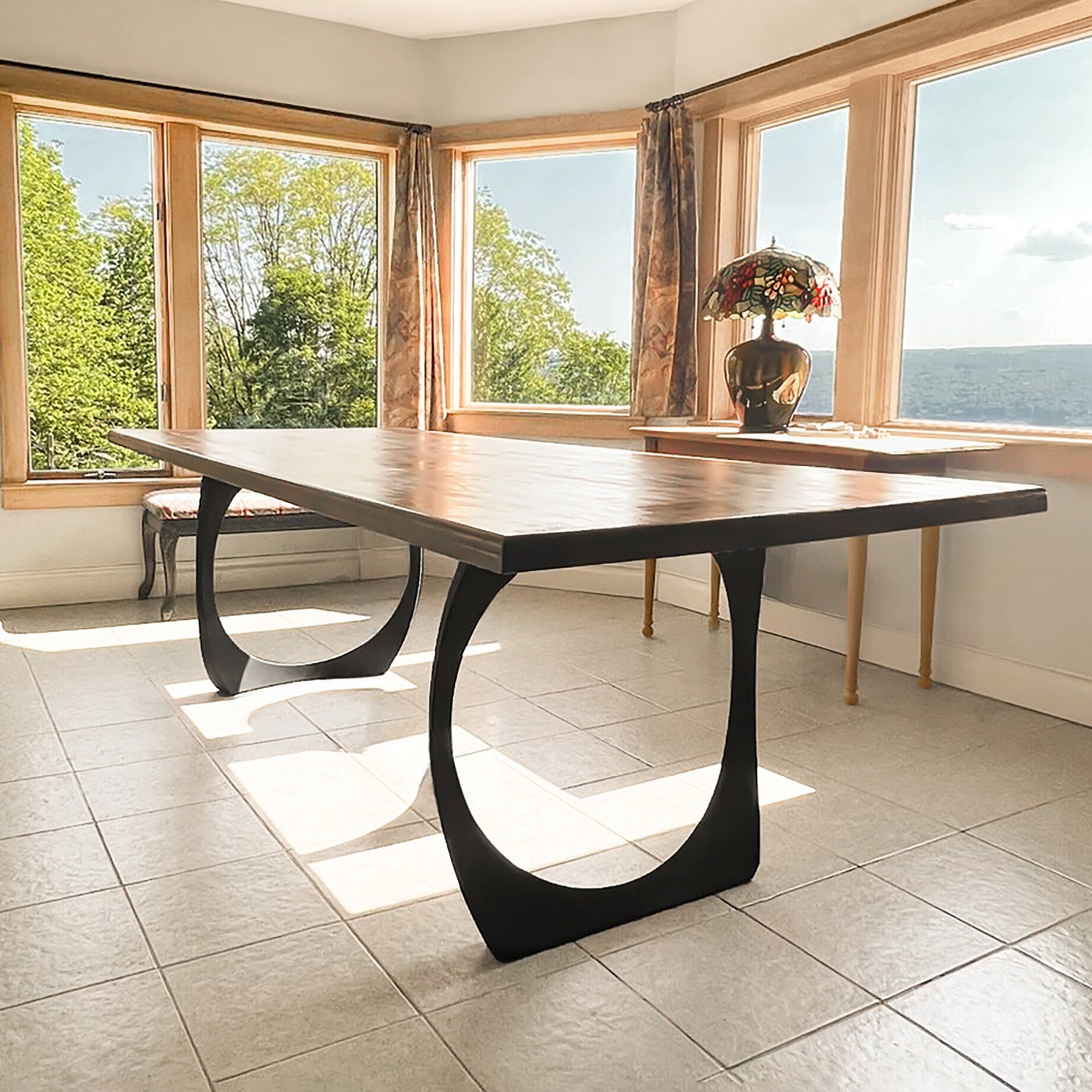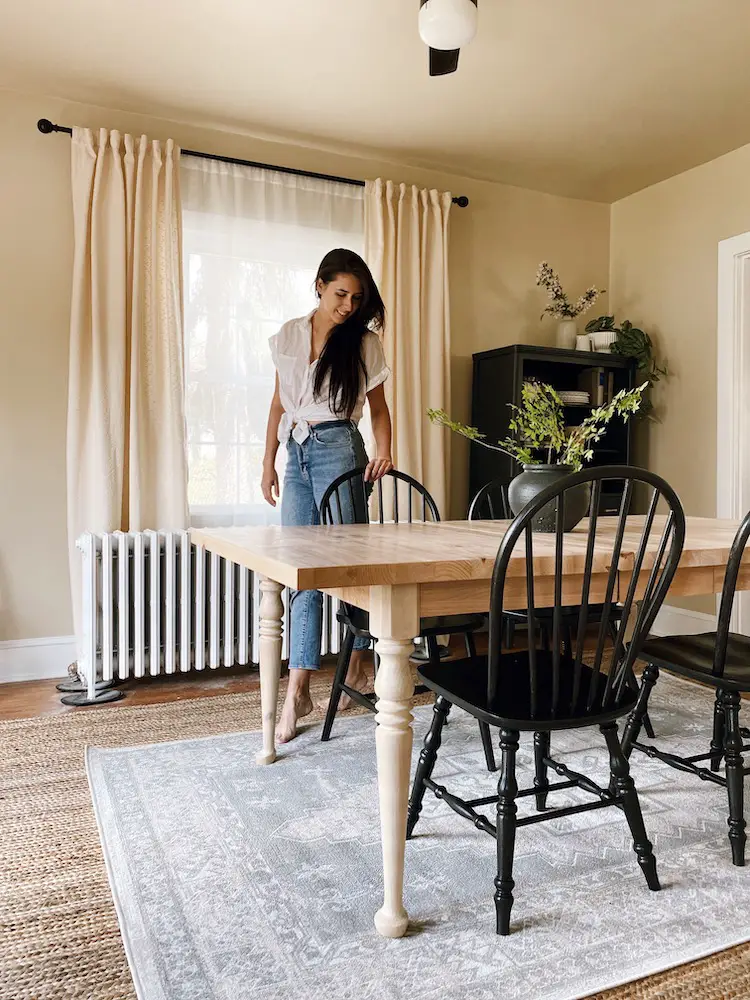Custom-made Dining Room Table Legs: A Stylish Enhancement to Any Home
Custom-made Dining Room Table Legs: A Stylish Enhancement to Any Home
Blog Article
Dining Table Legs: How to Select the Finest Designs for Your Area
Selecting the best dining table legs is important for both aesthetic and useful consistency in your dining area. Whether your space flaunts a smooth, contemporary ambiance or leans towards a much more traditional atmosphere, the style of the legs can considerably affect the overall appearance. Tapered legs exhibit contemporary beauty, while turned legs offer a nod to traditional appeal. Past design, the material-- be it cozy timber or smooth steel-- plays a pivotal function in establishing the tone. How do you make sure these components complement your existing decor while supplying the essential security? The solution exists in a balanced approach.
Assessing Your Dining-room Design
Exactly how do you establish the ideal eating table legs for your room? The answer begins with a complete evaluation of your dining area style. A cohesive design guarantees that your table legs improve the overall aesthetic instead of encounter existing aspects. Begin by observing the architectural features of your dining-room. Are there famous features such as revealed light beams, elaborate moldings, or minimal lines? These details frequently determine whether a conventional, rustic, modern, or industrial design is most appropriate.
Next, take into consideration the existing furnishings and style. The materials, shades, and appearances within the space play an important duty. An eating room with sleek, contemporary chairs and metal accents might benefit from easy, streamlined table legs. On the other hand, an area full of vintage items and abundant materials may call for ornate, sculpted legs.
Big, open eating areas can fit much heavier, much more substantial legs, whereas smaller spaces require more delicate, unobtrusive styles. By carefully examining these elements, you can select dining table legs that sympathetically mix with your eating area's design.
Popular Leg Styles Described

One prevalent style is the tapered leg, renowned for its sleek, modern look. This leg tightens inside out, using a minimalist charm appropriate for contemporary and Scandinavian interiors. Next, the transformed leg features complex spindle-like styles, commonly located in conventional and farmhouse setups. These legs include a touch of workmanship and sophistication.
Cabriole legs, with their unique contours, are synonymous with French Provincial and Queen Anne furnishings. Their graceful, moving lines bring a sense of refinement and historic beauty (dining room table legs). For those favoring a robust and uncomplicated layout, square legs supply tough assistance and a tidy, geometric appearance, perfect for commercial or minimalist areas
Last but not least, hairpin legs offer a retro, mid-century modern-day ambiance. Made from metal, these legs are both lightweight and strong, including an unique visual comparison to wood tabletops. Understanding these designs will certainly assist you in picking dining table legs that enhance your area's visual and functionality.
Product Factors To Consider

Timber is a classic alternative, understood for its heat and versatility. It comes in numerous types such as oak, walnut, and maple, each offering distinct grain patterns and shades. Steel legs, commonly Continued made from stainless steel, iron, or aluminum, offer a contemporary and industrial look while ensuring durable assistance. They are typically extra resistant to deterioration, making them a resilient selection.

Other materials like bamboo or rattan provide environmentally friendly options, bringing an all-natural and unwinded ambiance to the dining area. Each product has its pros and disadvantages, and the best option will certainly rely on your particular requirements and preferences.
Harmonizing Visual Appeals and Performance
Accomplishing the ideal equilibrium between aesthetic appeals and capability is essential when selecting eating table legs. While the aesthetic charm of table legs can significantly boost the general ambiance of a dining area, their useful aspects can not be ignored. look at these guys The design of the legs must balance with the area's design, yet they need to additionally give sufficient support and security for the table.
Take into consideration the building design of your room. Sleek, modern interiors may take advantage of minimal, steel legs that offer a clean and inconspicuous look. On the various other hand, traditional settings usually match transformed or sculpted wooden legs that include a touch of style and elegance.
Capability encompasses the security and longevity of the legs. Trestle legs, recognized for their toughness, can supply solid assistance for larger tables, making them suitable for families or constant entertainers. On the other hand, pedestal legs can provide more legroom and adaptability, enabling for better seats setups
In addition, the elevation and positioning of the legs are important for comfortable dining. Legs positioned also far inward might restrain seats, while those also near to the edge can restrict movement. Therefore, thoughtful consideration of both visual and functional aspects is vital for an ideal dining experience.
Personalization and Do It Yourself Options
Customization opens up a realm of opportunities for producing dining table legs that are distinctively tailored to your preference and requirements. Whether you look for a conventional, modern, or eclectic appearance, personalized options enable you to choose the specific products, finishes, and designs that best enhance your room. Personalized alternatives variety from selecting the kind of wood-- such as oak, maple, or walnut-- to choosing steel finishes like combed nickel or antique brass. Details layout aspects, such as transformed legs, tapered shapes, or detailed carvings, can be included to reflect your style.
For those inclined towards diy (DO IT YOURSELF) jobs, developing personalized dining table legs offers both a fulfilling experience and the possibility to accomplish a bespoke aesthetic. Do it yourself lovers can resource raw products and use woodworking or metalworking devices to see here craft legs that fulfill exact specs. Additionally, numerous online tutorials and workshops offer assistance, making the procedure much more accessible for newbies.
Ultimately, whether going with specialist customization or getting started on a DIY venture, the ability to customize dining table legs ensures that the last item harmonizes with your interior layout vision, boosting both capability and visual allure.
Final Thought
Picking the proper table legs requires mindful consideration of the overall style of the eating room, consisting of existing architectural features and furniture. Comprehending prominent leg designs and product options is crucial for achieving a harmonious visual. Stabilizing visual appeals with performance ensures security and enhances the dining experience. Personalization alternatives even more enable a customized layout. Ultimately, the picked table legs must complement the design, providing both visual appeal and practical support.
Report this page